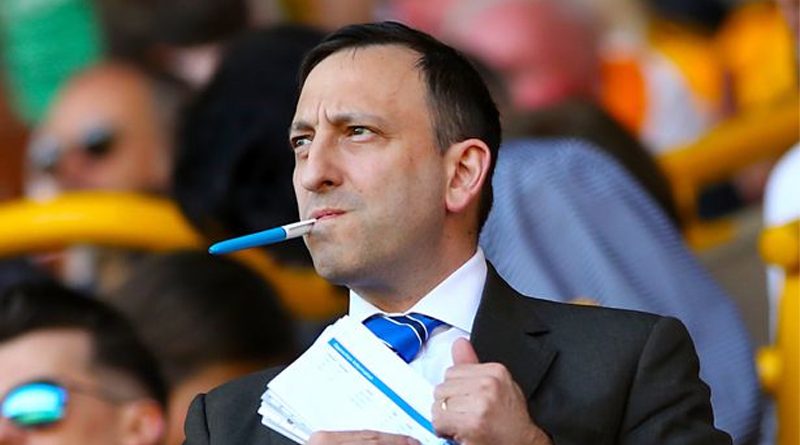Profit & Europe: Analysing Brighton net spend over the past 5 years
Having compared Brighton with the rest of the Premier League in terms of net spend during the summer 2023 transfer window, the second article in our WAB series extends the data to the past five years.
Once again, we are indebted to the work of BlueCityBrain and their fascinating review of all the numbers. It paints a picture of who has spent how much and what they have received in return, in terms of improvement up the league pyramid.
The BlueCityBrain graphic below shows the net spend of the existing 20 Premier League clubs between 2018 and 2023.

Most striking is the stark differential between the Albion with a transfer profit of £134 million and the net spend of their nearest rivals, Everton, who have lost £54 million.
For the purposes of analysis, the £4.5 million spend of Luton Town sandwiched between Brighton and the Toffees can be ignored as the Hatters are newly promoted.
Equally interesting is the three clubs relegated last season showing significant net spend in the five years to their relegation.
Southampton on £200 million and Leeds United on £183 million in particular will be wondering just what they have received for their money.
Leicester City fans would probably argue a new spend of £64 million and dropping into the Championship was worth of every penny to see their club win its first FA Cup, which occurred during the period covered by these numbers.
So, whilst the Beatles insisted that money can’t buy you love, can it buy you Premier League success? The table below shows the 2022-23 Premier League participants, their latest BlueCityBrain five year net spend and their positional change.
In the case of Leicester, Leeds and Southampton, the numbers exclude this summer and instead cover the five years to their relegation.
| English Pyramid Finishing Positions | |||||||
| Club | Net Spend | 18-19 | 19-20 | 20-21 | 21-22 | 22-23 | 5 Year +/- |
| Chelsea | £702m | 3 | 4 | 4 | 3 | 12 | -9 |
| Man United | £676m | 6 | 3 | 2 | 6 | 3 | +3 |
| Arsenal | £549m | 5 | 8 | 8 | 5 | 2 | +3 |
| Spurs | £510m | 4 | 6 | 7 | 4 | 8 | -4 |
| Newcastle | £462m | 13 | 13 | 12 | 11 | 4 | +9 |
| Aston Villa | £342m | 25 | 17 | 11 | 14 | 7 | +18 |
| West Ham | £280m | 10 | 16 | 6 | 7 | 14 | -4 |
| Forest | £252m | 29 | 27 | 37 | 24 | 16 | +13 |
| Liverpool | £245m | 2 | 1 | 3 | 2 | 5 | -3 |
| Saints | £200m | 16 | 11 | 15 | 15 | 20 | -4 |
| Leeds | £183m | 23 | 21 | 9 | 17 | 19 | +4 |
| Man City | £156m | 1 | 2 | 1 | 1 | 1 | 0 |
| Palace | £145m | 12 | 14 | 14 | 12 | 11 | +1 |
| Wolves | £128m | 7 | 7 | 13 | 10 | 13 | -6 |
| Fulham | £111m | 19 | 24 | 18 | 21 | 10 | +9 |
| B'mouth | £102m | 14 | 18 | 26 | 22 | 15 | -1 |
| Brentford | £66m | 31 | 23 | 23 | 13 | 9 | +22 |
| Leicester | £64m | 9 | 5 | 5 | 8 | 18 | -9 |
| Everton | £52m | 8 | 12 | 10 | 16 | 17 | -9 |
| Brighton | -£134m | 17 | 15 | 16 | 9 | 6 | +11 |
What does all this tell us? Firstly, it no surprise to see Chelsea at the top of the spending charts. Over £1 billion has been paid out in the past 12 months alone since Todd Boehly arrived at Stamford Bridge.
In productivity terms, it is not looking good. The Blues have fallen nine places during that period of spend. But with most of Boehly’s outlay on young players like Enzo Fernandez, Mykhailo Mudryk and Moises Caicedo, the picture may appear rosier for Chelsea in several years time.
Manchester United, Tottenham and Arsenal have a combined net sped of £1.2 billion. United and Spurs have simply maintained their positions; Arsenal have at least managed an upturn to become the closest challengers to Manchester City last season.
The next three clubs on net spend are Newcastle United, Aston Villa and West Ham United. All have qualified for European competition in recent years.
This underlines that most clubs need cold, hard cash to finish in the top seven – as impressive as the managerial feats of Eddie Howe, Unai Emery and David Moyes have been.
Nottingham Forest have spent £252 million with the jury very much out on whether their revolving door approach is sustainable. Forest have signed 40 new players since winning promotion from the Championship.
Liverpool show a lower net spend than most of their big seven competitions, although they did outlay £140 million to establish themselves as second best after City some six years ago.
The collective £382 million spent by Leeds and Southampton we have already mentioned. The Saints have at least recouped a significant chunk of that through post-relegation sales of players such as Romeo Lavia and Tino Livramento.
Manchester City having such a low net spend may come as a surprise until you learn they spent £725 million between 2013 and 2018.
Having put together an expensive yet world class group during that period, City have only needed to top it up with a couple of signings per summer.
Not that it should take away from their achievements; Pep Guardiola still deserves credit for maintaining City’s place as England’s top team given the amount other clubs have spent trying and failing to catch up.
Crystal Palace, Wolves, Fulham and Bournemouth have played a reasonable hand with arguably slight over achievement compared to net spend.
The suspicion around Fulham – supported by the 2022-23 expected points tables that had them in a relegation fight – is that last season’s ninth place finish involved a degree of good fortune.
Leicester and Everton fans and managers highlight their lower net spend as a strong factor behind their fall from challengers for Europe to relegation candidates.
We are therefore – somewhat depressingly – left with only three current Premier League clubs who have managed significant overperformance compared to net spend.
Brighton, Brentford and in their magical rise from Conference to top flight over just nine seasons, Luton.
This is nothing new. Looking back since the Premier League was formed in 1992, there are perhaps only three examples of clubs who have managed to stay at a higher level than their spend over a sustained period of time.
The title winning Leicester squad of 2016 is the most obvious. The Foxes had a net spend of just £60 million in the three years preceding their championship win and although the 81 points which secured the title was a lower amount than required in most seasons, it remains a phenomenal achievement. One which will be very hard to match.
Southampton achieved four top 10 finishes from 2014 to 2017 with essentially a balanced transfer spend. That is a record Brighton could supersede, presuming the Albion remain on their current trajectory and with a much better financial surplus.
Lastly, there is Wimbledon. Seven top half finishes and FA Cup winners in a rag to riches tale compared to Brighton previously on this website.
The Albion are making similar progress to Wimbledon but with one difference. Whereas the Dons never had money to spend and had to sell as a necessity to survive, Brighton have invested heavily as part of their “develop and profit” programme – something we will cover in the third and final article.
Peter Finn




